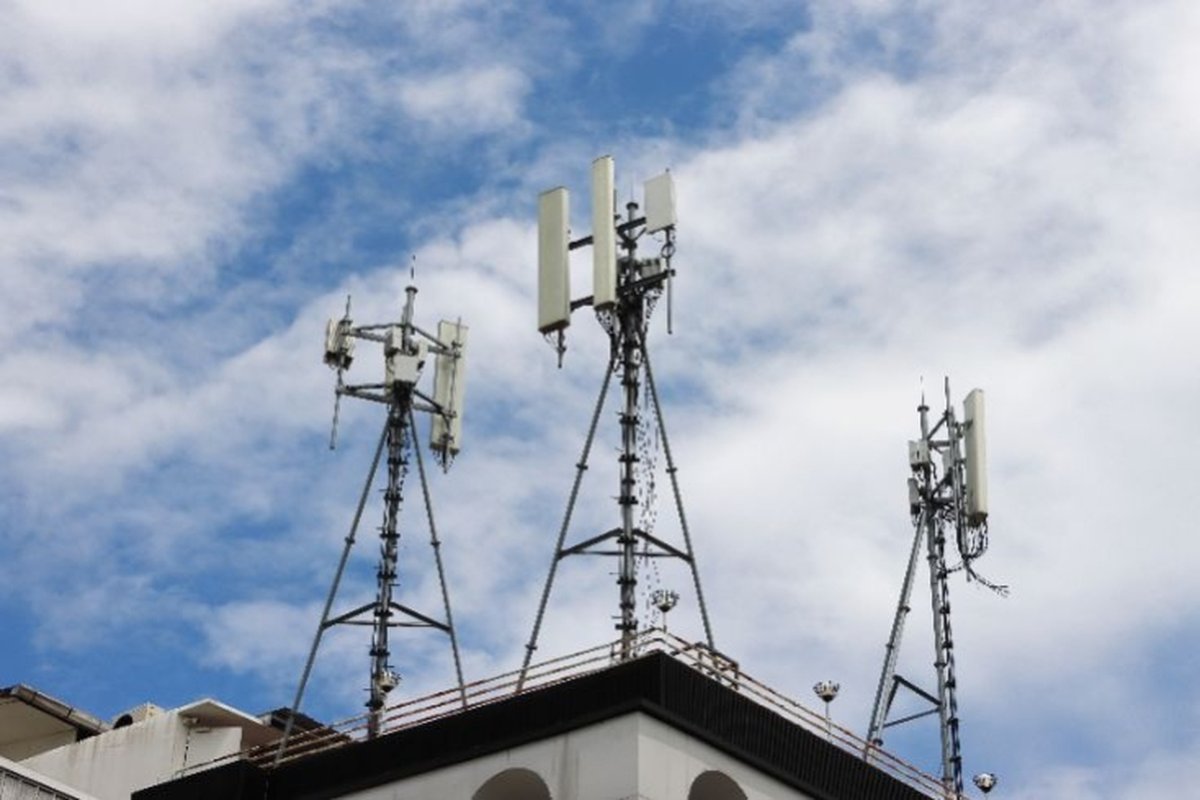Addressing cellular infrastructure for small to mid-size enterprise (middleprise – from 15,000 square feet to 500,000 square feet) has hit a major challenge in terms of who pays for the in-building system.
Carriers may be willing to subsidize enterprise solutions for large-scale customers that are larger than 500,000 square feet (usually in the form of a classic DAS), but the ROI for a middleprise customer installation is just not sufficient to justify the carrier’s cost, or to inspire the carrier to fast resolution. Mobile-Experts’ 2017 analysis states, “While enterprises see increasing utility and value from good mobile services indoors or some remote places, mobile operators are less inclined to deal with hundreds and thousands of potential in-building projects. For mobile operators, there’s just not enough revenue opportunity to justify investments in most buildings.”
As such, it is understandable that carriers are transferring the burden of cost to the building or business owner, including the cost of installation (which can be far more expensive than the hardware itself) and maintenance.
A large enterprise may be able to support the cost of a traditional DAS solution that requires extensive planning, RF design, engineering, highly skilled technical installation and maintenance, as well as extensive budget and contract negotiations with multiple vendors, integrators, and the carriers themselves.
In contrast, the cost of a traditional DAS solution is typically out of range for the middleprise. While alternative solutions, such as femtocells and Wi-Fi calling, are available, they do not have the reliability, quality of service, or management capabilities that a business requires. CBRS is full of promise, but like a “neutral host small cell” the commercialization is murky at best. Often business challenges getting carrier interop are more cumbersome than technical, and this is the case here. Middleprise venues are particularly challenged with the price/performance gap, as they are too large for affordable consumer-grade solutions and too small for high-performance DAS.
In the interests of simplification, the following is a framework for cost considerations when a middleprise venue owner or IT manager is planning to purchase a cellular coverage solution for their facilities, whether a single building or campus. The cost of coverage could be broken into as many as 12 individual components, but with this simpler approach, it is distilled down to three: (1) capital expenditure (CAPEX), or how much the gear costs; (2) installation charges for deploying the solution; and (3) ongoing service and/or maintenance (operational expense/OPEX), i.e., what it takes to keep the system running.
Each of these components has associated costs. By understanding them better, a building owner or enterprise IT department has a better chance of choosing the system with the best TCO for that specific company.
Gear
The cost of the gear is typically based on three components:
(1) The head-end is the control point of the solution that captures the donor signal entering the building, and controls distribution of that signal through remote units. This gear can be in the form of a smart signal booster, small cell, a passive DAS, an active DAS, or an active DAS hybrid.
(2) The second component would include antennas or remote radio heads (similar to the access point of a Wi-Fi system).
(3) The last part of the gear cost estimate is the cabling. There are mainly three kinds of cables one can use for an IBW solution: coax, fiber, and Ethernet (twisted pair).
There is a wide variety of options for IBW gear, at vastly different cost points. These can range from under $1,000 (e.g., smart signal booster), to upwards of $100,000 or substantially more (e.g., active DAS).
Installation
We’re breaking installation into three classes, each of which comes with its own price point. The first is “self-install,” a small-scale installation of signal boosters, small cells (one to three systems) or Wi-Fi based solutions that can simply be unboxed and plugged in, and require a minimal amount of provisioning or setup. For the middleprise, a “self-installed” system would be done by IT Professionals, or others with similar skills. Important to note that not all gear is certified as “self installable” regardless of the capability of the Enterprise. For example, FCC Part 90 rated equipment requires a certified installer.
The second class covers solutions that require the skills of a systems integrator. These solutions are installed by industry-certified installers and typically utilize tools that augment and support the planning process, equipment selection, and antenna aiming. These tools automate the difficult and complex math calculations of RF planning, and help with the complexity of specifying the system components and configurations for the unique venue requirements. Many System Integrators have professionals experienced in RF design on their staffs
The third, which is typically for the largest and most costly projects, are those that require an RF engineer. These skill sets are needed when working with solutions that have sophisticated hardware, software, tools, and devices. As systems grow in size the design difficulty can increase exponentially. Small and medium-sized systems, under 500K square feet, may not require RF Engineering; larger than that normally will. RF Engineers are highly-trained professionals who understandably require a premium for their services, and there may be some delays in installation due to waiting for a workforce with these skills to become available.
The estimated average hourly cost for resources with these skillsets can be seen below:
Opex and Maintenance
Backhaul is an important part of any wireless solution. Backhaul can be wired or wireless. If additional capacity is needed at the site, wired backhaul may be a requirement. There are considerable differences in installation costs and activities for systems that require a wired connection to the core network (backhaul) versus those that are wireless. Wired backhaul could require construction-like activities, permits, etc. A variety of vendors offer systems that require with zero wired backhaul, making them extremely cost-efficient. Wireless backhaul will usually involve one or more external donor antennas, and the kinds of skills to install such. Systems requiring dedicated backhaul could add considerable costs to its TCO.
Maintenance costs should be considered with the budget, and vary widely depending on the system installed. Smart signal boosters, small cells, and some active DAS hybrids will not require any special maintenance agreements. Passive and active DAS equipment are more complicated RF environments and should require regular maintenance. With these systems, it may be necessary to look at the cost of a maintenance contract with the installer.
Ideally, for the middleprise, the system chosen is self-optimizing and intelligently adjusts to changes in the network without requiring manual reconfiguration or engineering. Once installed by a systems integrator, the solution can be easily managed by the IT department. Basic status reports should be provided to ensure ongoing performance.
Examples of How TCO was Improved with an Active DAS Hybrid
Nothing stops the news, except poor cellular reception – A major daily newspaper relies on its corporate AT&T subscription to ensure staff are connected while working in its Washington D.C. newsroom. However, reporters and other employees on the AT&T network experienced spotty coverage and dropped calls when using their cellphones inside the eight-story building that spans a city block and houses the newspaper’s 350,000 sq. ft. headquarters. The newspaper called on The Atlantic Technology Group, based in Maryland, to solve the problem.
“Reporters were actually walking outside the building to take their cell calls or were stuck near their desks waiting for important calls to come in, which hurt productivity,” says Dan Connelly, president of the Atlantic Technology Group. “They got a great signal outside, but the reception inside the building was really lousy.” Energy efficiency initiatives, like LEEDs, can severely impact cell signals. A 20-30dB loss is common from the outside to the inside of a building which kills cellular service, and virtually impossible to solve from the building’s exterior alone.
Atlantic Technology Group was able to use the newspaper’s existing Ethernet cabling to install CEL-FI QUATRA, the in-building enterprise cellular system developed by Nextivity. Connelly says, “This saved the client money and saved us time. The installation would have taken at least an extra week to run the cable if we didn’t use the existing cable.”
According to Connelly, the signal on the roof of the building wasn’t great either, and they had to move the antennas many times to get the best signal. They used the installation tools provided with CEL-FI QUATRA to determine the best positioning of the antennas. “We moved the antennas many times to get the best signal. We used Nextivity’s AntennaBoost solution to determine the best direction. The nice thing about the Nextivity solution is that the antennas are very non-obtrusive. They’re relatively small in size, not these big satellite antennas. Building owners are typically pleased with the size.”
Hard ceilings in the building were another issue encountered. Connelly explains that because the system is powered over the ethernet cables that connects the different system elements (called Power over Ethernet or POE) there was a lot of flexibility on where the internal coverage units could be placed without needing to add a lot of power outlets.
“With PoE it is easier because you don’t have to find a source to light up your coverage unit. Not too many companies have power sources in the ceiling. You would have to get an electrician out to either put in power or power cables hanging from the ceiling, which wouldn’t work,” says Connelly. “The client also really liked the way the coverage units look. They look like WiFi access points, so blend in well with their existing infrastructure.”
With CEL-FI QUATRA, the newspaper benefited from several cost savings– including reduced installation man hours, to no cabling or electrician visits required, to improved production efficiency of its reporters. Plus, since the installation a year ago, the newspaper no longer has cellular coverage problems.
Apartment tenants rent where they get good cellular signal – Lightstone Group, a real estate investment company, was in the process of constructing a 10-storey, 375,000 sq. ft. apartment building called ARC Living in Dutch Kills, a Long Island City, New York neighborhood. Like many new building projects, there was no provision for landlines, so residents leasing an ARC apartment had to rely on their cell phones for communication. But new construction material, which often inhibits cellular signals from penetrating indoors, was making this impossible.
“At least a dozen people came in and refused to lease apartments because they couldn’t get an indoor cellular signal, and those who did move in were frustrated with their inability to make calls from inside their homes,” says Steve Klingensmith, Signal Booster Solutions Manager at RCS Wireless Technology. “We had to find a way to give residents the coverage they needed.”
Shortly after the install was complete, Klingensmith ran into a resident who was out walking his dog. “I asked him if he had tried to make a call from his cell phone recently, and he said ‘no’ because he’d never been able to get signal,” says Klingensmith. “I asked him to go try again, and he was shocked. It was the first time he’d ever been able to make a call from inside his apartment.”
While the information provided above offers a cursory look at the components that impact the cost of in-building coverage, for more details, download the whitepaper “Who pays for middleprise in-building coverage?”
A version of this article was originally published by Inbuilding Magazine



